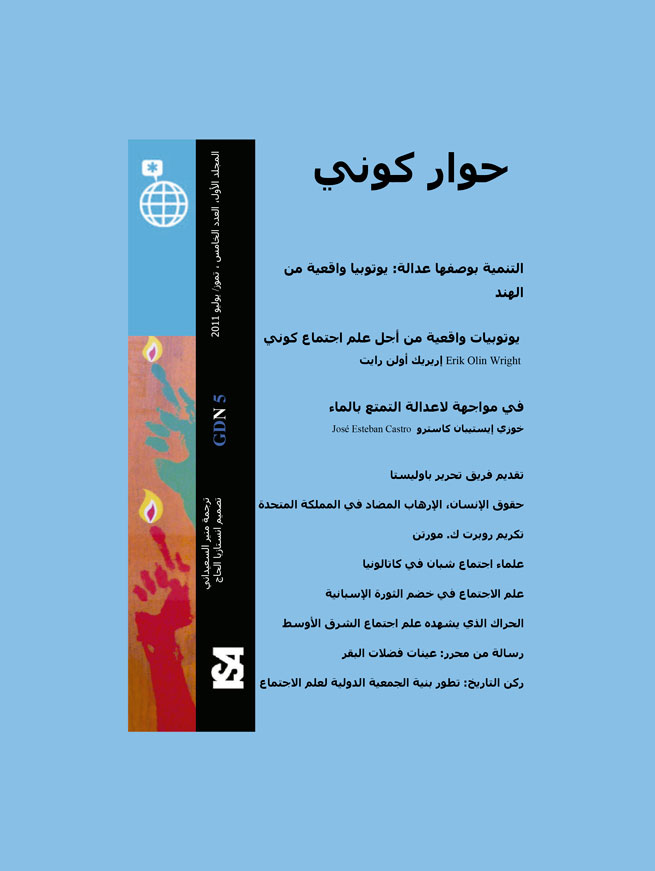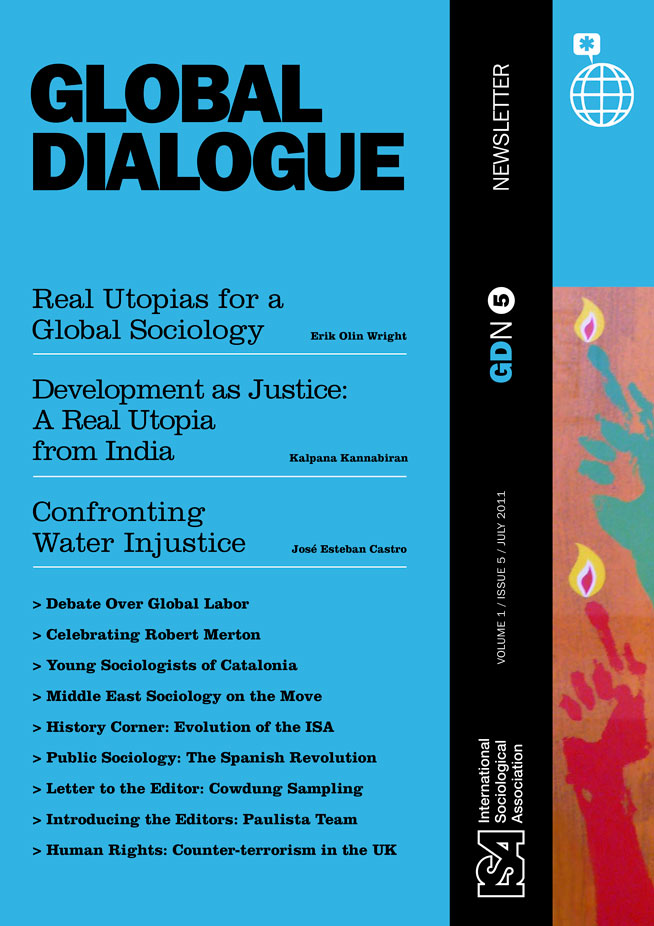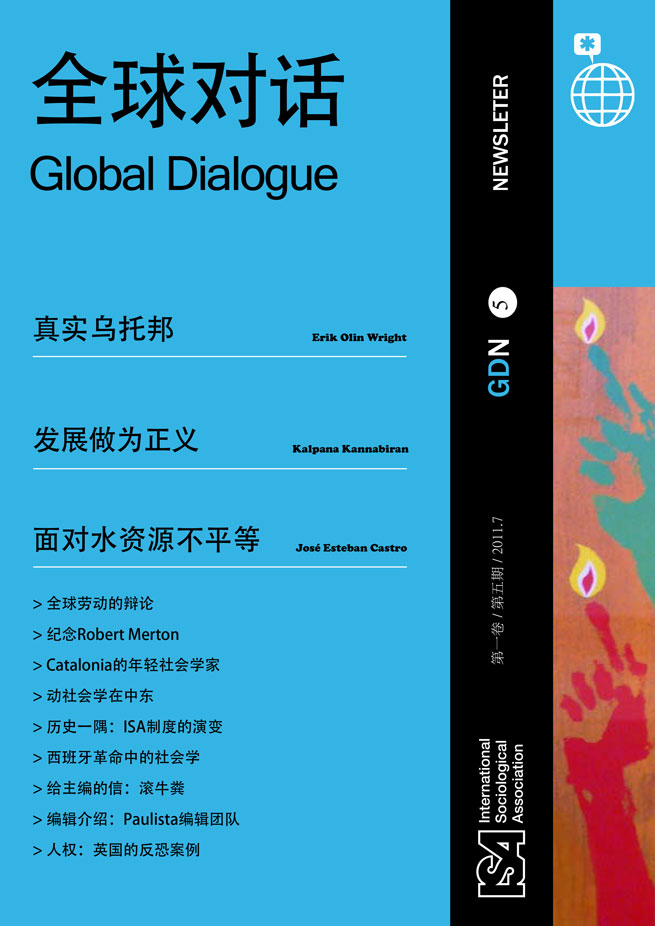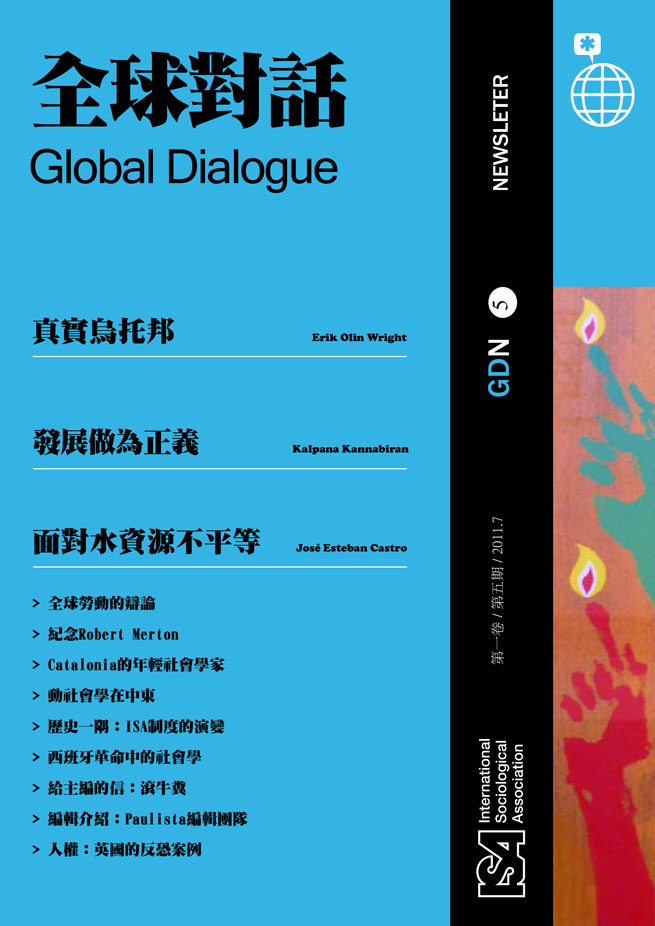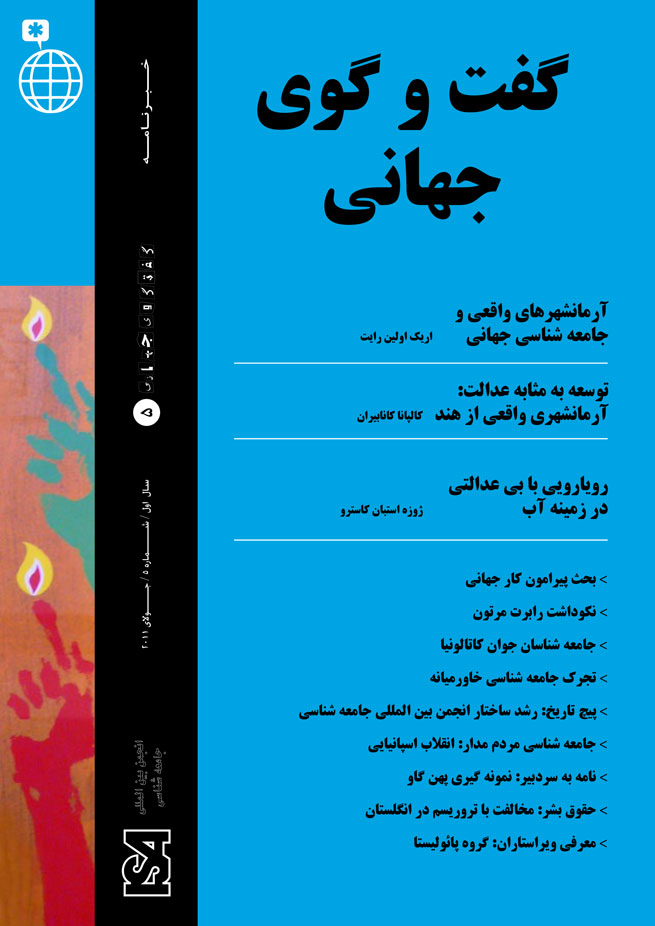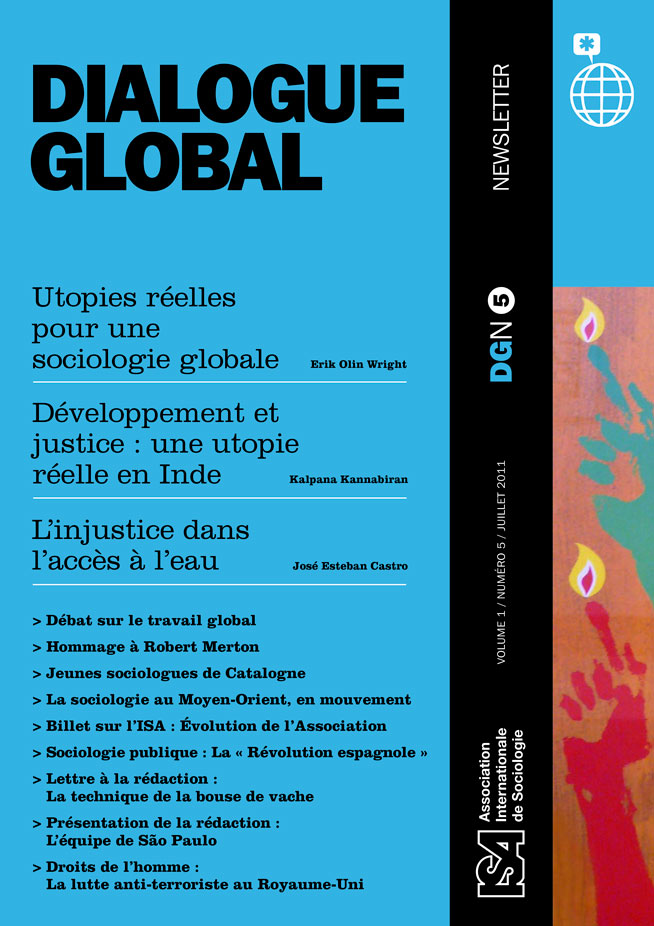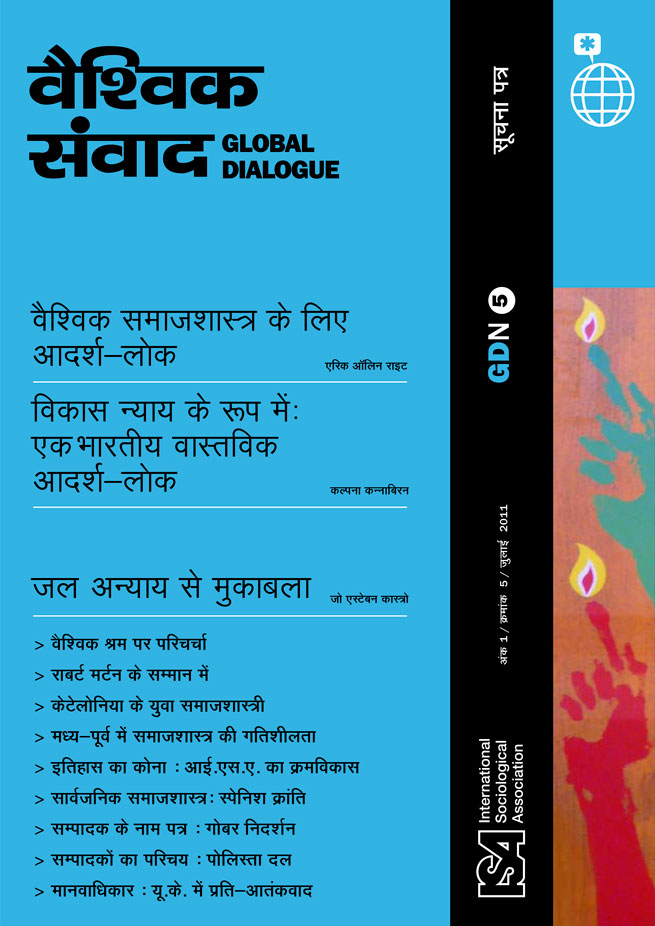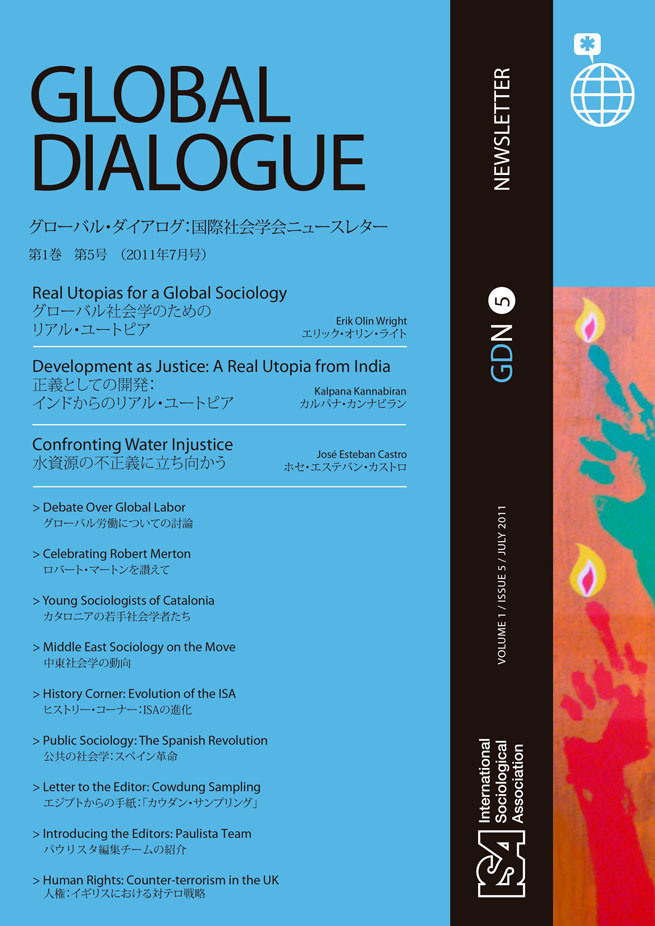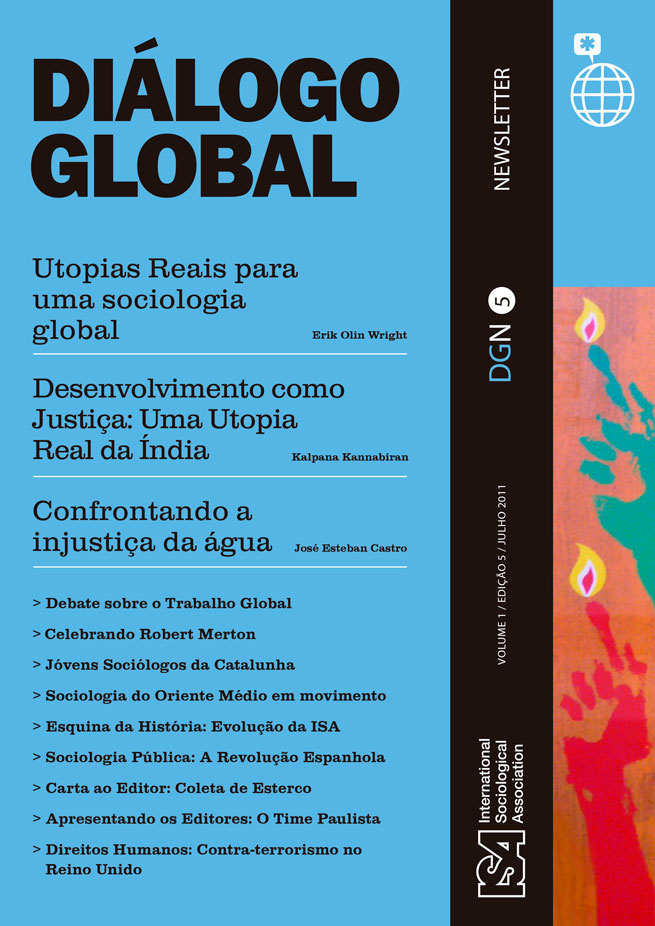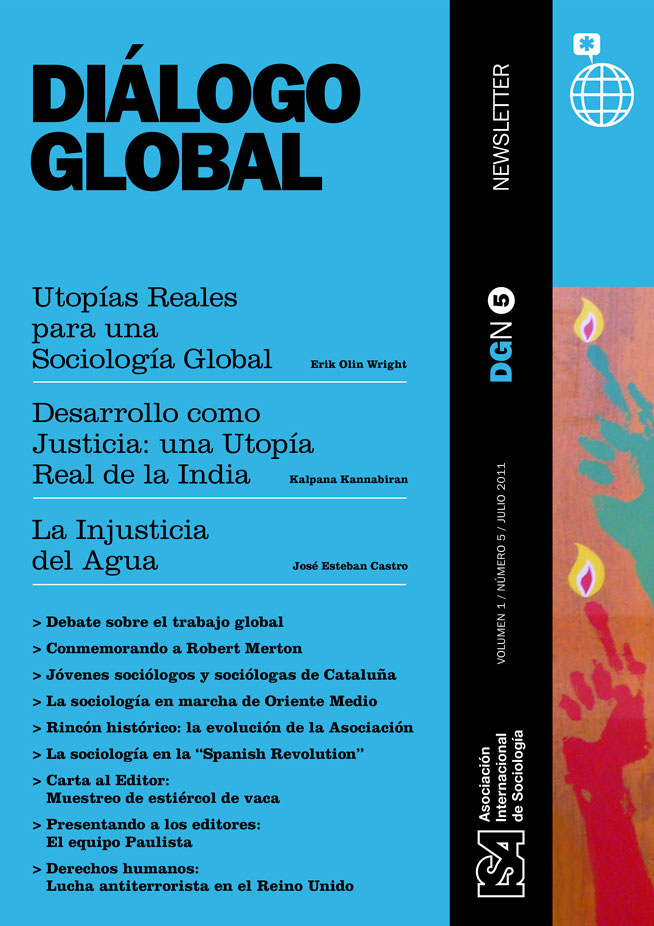Read more about Debate over Global Labor

Global Labor – A Mexican Perspective
by Enrique de la Garza
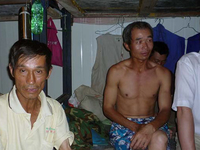
Global Labor – A Chinese Perspective
by Pun Ngai
July 18, 2011
The English historian, E.H. Carr, was said to have remarked that what you see depends on which side of the mountain you stand. I stand in the southern tip of Africa, in Johannesburg, the city of gold. Johannesburg was built in the first phase of globalization – the first great transformation – in the late nineteenth century.
In this brief lecture I will do three things: (1) provide the social context for an understanding of global labor from a southern perspective; (2) discuss my own work on the impact of global restructuring on workers; (3) suggest a different way of understanding how a counter-movement could be built in the Global South.
The social context
The idea of worker solidarity – i.e. the idea that the strong should help the weak – goes back to the beginnings of industrial capitalism. It is captured in Karl Marx’s well-known slogan, workers of the world unite!!
In South Africa this call for worker unity took a peculiar form when, in the general strike of 1922, white workers mobilized around the slogan “workers of the world unite for a white South Africa.”
Those early revolutionary socialists who brought the idea of labor internationalism from Europe, failed to persuade their fellow white workers – the colonizers – that their destiny lay with black workers – the colonized. The white workers defended their position on the grounds that they were being undercut by cheaper black labor.
This segmentation of the working class remains the central challenge in building worker solidarity – there is no homogeneous proletarian condition, here or anywhere else in the world. Just as in the late nineteenth century, in many parts of the world today, a bad job is better than no job at all!!
But, and this is a story that needs to be told, black workers were over time to win their right to organize and join a trade union. Their struggle to win recognition for their unions was long and painful in the face of intransigent employers and a hostile and brutal apartheid state.
An important factor in their victory was international solidarity. The campaign to boycott South Africa and impose financial sanctions was crucial in persuading the apartheid government to negotiate with the African National Congress under the leadership of Nelson Mandela. The solidarity shown, for example, by dock workers in San Fransico when they refused to unload South African ships is one among many examples of international solidarity.
The victory of the African National Congress in 1994 was a precarious victory as it was won in a world where power had shifted decisively to capital. South Africa was experiencing a double transition. On the one hand, it was a transition to democracy where a militant labor movement had won significant rights, on the other hand, it had entered the global economy, where international competition was forcing employers to cut costs and produce at the China price.
The impact of GlobalRestructuring
For labor, the process of global restructuring that began with the winning of democracy, reconfigured the labor market creating an increasingly insecure workforce. This is what we examine in our book Grounding Globalization. We took the production of white goods – fridges, washing machines – as a lens to show how international competition is creating greater insecurity amongst workers in the three factories in the three countries we studied.
We framed the study in terms of Polanyi’s notion of the double movement, suggesting that this period of neoliberal globalization could best be described as the second great transformation. We did find modest experiments and initiatives to protect society against the unregulated market, but, in general, their responses to global restructuring were localized. The only attempt to challenge global restructuring was an initiative of the workers at Electrolux in Orange, Australia, to globalize their struggle. Through the Internet they were able to establish contact with workers in Electrolux in Greenville, a small town in Michigan, USA, and the home of Electrolux in Sweden. But this attempt at building worker-to-worker solidarity in production failed. The leadership of the Swedish union was too close to management not to see the advantages to the company of relocating to China. But ‘successful failures’ can provide the basis for the next step in the struggle. We remember the Montgomery bus boycott but, as Aldon Morris has shown, it was preceded by several other ‘unsuccessful’ and little remembered bus boycotts.
The implications for Transnational Solidarity
It is useful, in thinking about transnational solidarity, to distinguish between three different types of solidarity.
The first type I will call the humanitarian. These are acts of solidarity in defense of victims of human rights abuses – such as victims of racism or child labour or a struggle for union recognition by a group of workers; these are driven largely by moral claims – they can be relatively powerful as the successful anti-apartheid movement has shown. This form of solidarity can take the form of a consumer boycott, or campaigns such as the campaign against Rio Tinto over basic worker rights. These campaigns are relatively easy and inexpensive to organize in the age of the Internet.
The second type of transnational solidarity I will call the production approach. Here acts of solidarity are between workers on a factory-to-factory basis. These acts are the most difficult to organize as we see from the Australian case – the internationalization of production has created a competitive logic between countries. If workers in GM go on strike, other car producers will sell better. But in spite of these obstacles there is a growing co-ordination of transnational solidarity in production. Volkswagen workers gather worldwide every year to co-ordinate their demands across VW factories from Germany, Brazil, India and South Africa. Seafarers are the first sector to engage in global collective bargaining. Inspectors from the international transport workers federation carry out inspections on vessels when they dock in port. In this way they are able, for the first time in history, to agree on a minimum global wage in a sector and enforce it for sea farers across the globe.
These new forms of transnational organization challenge the conventional nation-based forms of unionism that prevailed in the twentieth century. According to an older model of international solidarity, such links tended to be channeled through specialized international departments and were more likely to be between the leaders of trade union federations. Instant and direct communication through email and Skype has changed all this. These new forms of transnational action are decentralized and are as likely to be bottom-up as top-down.
The third type of solidarity I will call the regulatory approach. This approach does not try to bring workers together in production but tries rather to build a common body of soft law – global rights and standards; the aim is to regulate the market, rather than to replace the market – to make the market, as Peter Evans has said, the servant of society rather than the master.
One innovative idea that is being implemented in the Global South is the idea of a global social floor – a right to a pension, access to health care, a child grant and a basic minimum of income whether through a job guarantee or a direct cash grant. These are the contemporary innovations in social policy in countries such as Brazil, India and South Africa.
These new policies are the embryo of a counter-movement – but it is a counter- movement from above – the state is intervening in India through the NREGA to provide each rural household with a guaranteed 100 days work a year. It gives each household the right to work, provided they have a job card. Some may dismiss this as mere reformism and a strategy of co-optation – but this misses the point. These could be the first steps in a staircase of a steadily expanding system of social protection.
The point is that globalization is not only a constraint – it is also an opportunity for organization across borders; globalization has accelerated the flow of a rights-based discourse – this is leading to movements from below as we have seen in recent months in North Africa.
However, the most innovative organizations that have emerged are transnational networks such as StreetNet International. StreetNet International, based in Durban, brings street vendors together internationally to put pressure on local municipalities to recognize their right to trade in public spaces.
The choice is not between going global or remaining local, but rather navigating between the local and the global. This combination of the local and the global has led to the emergence of what Sidney Tarrow calls “rooted cosmopolitans”.
By linking production globally through global value chains, companies have become vulnerable to new sources of power. A delay in the delivery of an engine part made in Korea to an assembly line in Australia can force employers in both Australia and Korea to the bargaining table. This is not all that different from the challenge Henry Ford faced in Detroit in the thirties. New sources and forms of power have emerged on the age of globalization.
If it is premature to call these forms of action counter-hegemonic globalization, they have nevertheless shaken up our research agenda, and challenged us to rethink the relation between global capital and the International Financial Institutions, on the one hand, and the global labor and social movements on the other. This emerging research agenda will require a multi-level analysis if it is to contribute to the construction of a global counter-movement.
Edward Webster, University of Witwatersrand, South Africa
This issue is not available yet in this language.
Request to be notified when the issue is available in your language.
If you prefer, you can access previous issues available in your language:
